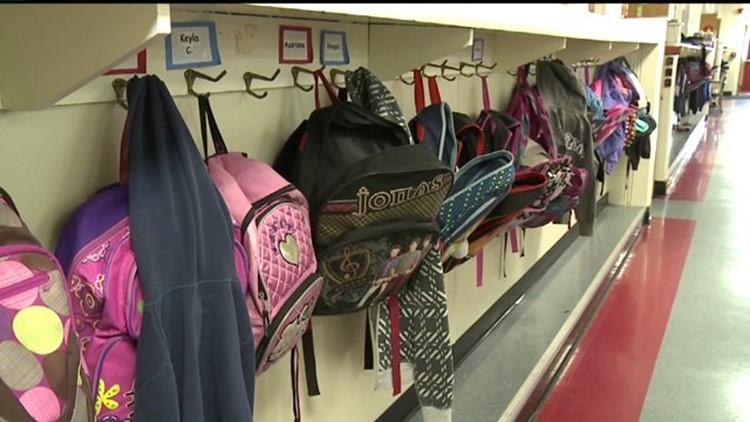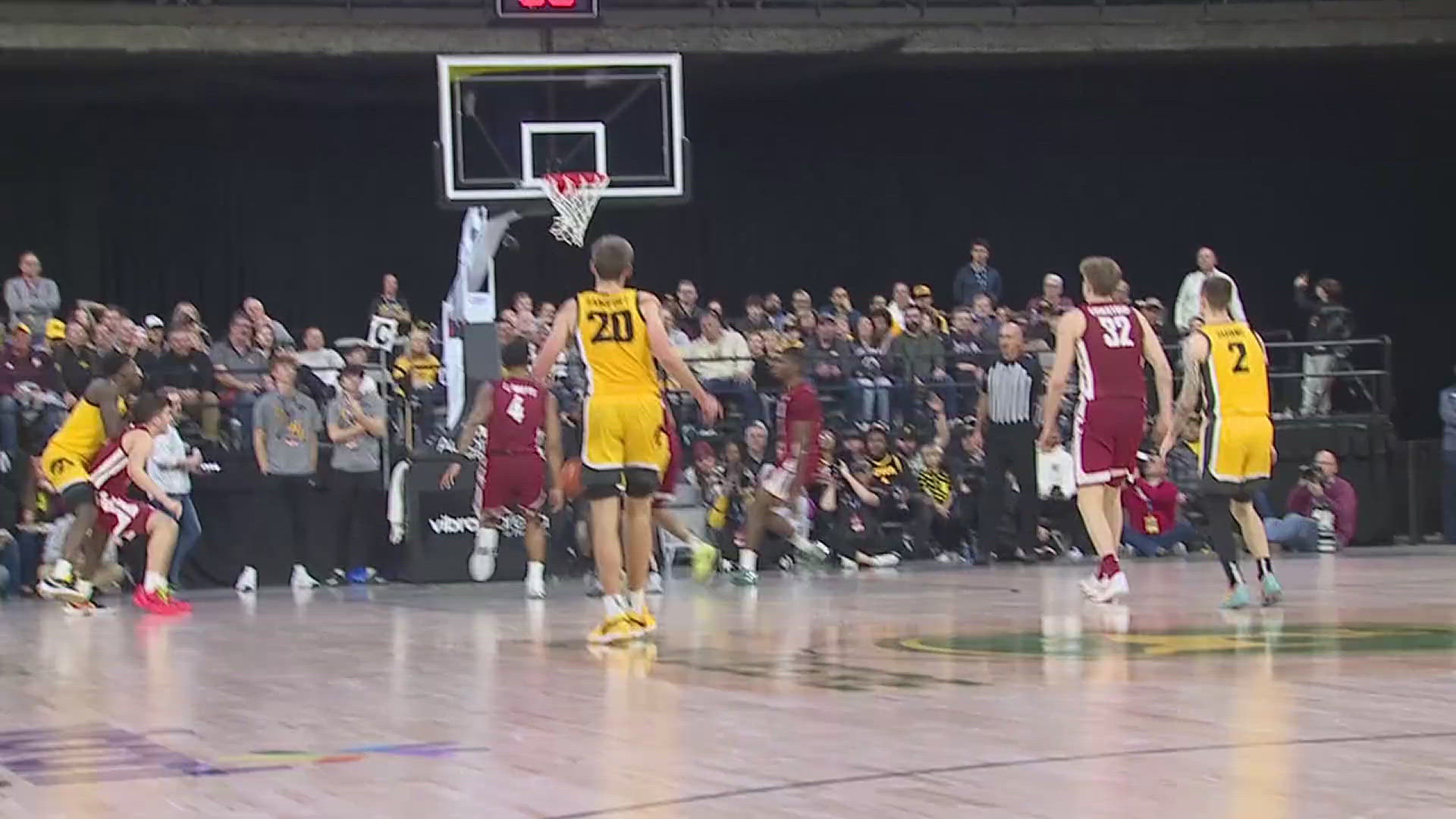(CNN) — When they head off to school every morning, the students of today need their laptops and tablets and a charger for both. Yes, they still have to bring books for calculus, history, science and French.
Notebooks? Check. Binders, too, and agendas and planners and bundles of sharpened pencils and fresh pens. Oh, and a book for pleasure — Harry Potter is still popular, if weighty.
They can’t leave behind their swimsuit for gym class, their shoes for cheerleading, their sweats for football, or their French horns or cellos. Don’t forget snacks. Cookies, crackers, an apple. Lots of water bottles.
Then there’s all the little stuff that’s buried at the bottom, just in case. Hairbrushes. Flashlights. Chess pieces. A ball to toss around. An origami frog, just because it’s awesome.
What’s really inside those big, heavy backpacks, anyway?
None of this surprises Karen Jacobs, a clinical professor in occupational therapy at Boston University. Backpacks become a “portable life support system” filled with supplies and goodies students probably won’t need that day, but feel they must carry anyway, she said. She can spot changes in students’ postures in any school hallway.
“They look like turtles; they’re walking forward, the posture changed,” said Jacobs, who is past president of the American Occupational Therapy Association, which touts a backpack awareness day as children head back to school every fall. “Some will complain they have headaches, pain in the shoulders, neck, backs.”
In the short-term, students might notice aches and pains, but most won’t realize that backpacks could be to blame. Few students told CNN their backpacks were too heavy, although most admitted they sometimes struggle to lift them, and it’s sometimes uncomfortable to carry them for more than a few minutes.
Long-term, children and teens with back problems are likely to become adults with back problems, Jacobs said. More research is needed to uncover whether heavy backpacks are causing other lifelong injuries or making people shorter, though, she said.
One small 2010 study of eight children published in the journal Spine found that heavier loads compressed their spines. A much larger 2012 study published in the Archives of Disease in Childhood did not see significant effects on the spines of 1,400 students who carried backpacks. Another study, published in BioMed Research International in August, studied 109 7-year-olds in Poland. It found that backpacks heavier than 10% of a child’s body weight can cause the back to lean one way or another, and that lighter backpacks could ease the strain on their spines.
In all cases, researchers found that too-heavy backpacks can leave children in pain.
So, what’s inside those bags?
The many, many things they carried
Not every backpack was too heavy. Some older students said they’d learned to cut down their load as they’d gotten closer to graduation. The youngest children often carried just a paperback book, a folder and a few colored pencils or markers. Jahi Polk, a first grader at KIPP STRIVE Primary in Atlanta, said when he didn’t want to carry his crayons anymore, he spoke up.
“My mom took care of them because I said it was sooooo heavy,” he said.
Then there’s Elijah Marbuary, an 11th grader at KIPP Atlanta Collegiate high school, who carried the heaviest backpack CNN weighed. He is studying advanced placement literature, environmental science, geography and U.S. history, honors pre-calculus, and he’s in student government and band. (His French horn, at least, stays in one place most of the time.) He rarely gets home before 8 p.m., he said, so he tries to finish as much work as possible before then. The only way to take advantage of the time is to keep all his materials close.
“I just like to have all my stuff with me,” he said. “I don’t want to bother a teacher, asking him to go to my locker.”
Some don’t have access to lockers, or they prefer not to use them. The hallways are too crowded, and it takes too long to stop between classes, students said. There’s a culture of carrying a big backpack in some grades, too. Allie Jeffay, an 11th grader at Westminster Upper School in Atlanta, said she used her locker in earlier grades, but it was less convenient now, even though her backpack topped 23 pounds. She needed some of her school books, but she really just enjoyed having a few things of her own, like her script for the musical “Titanic.”
“It’s really fun to have that physical manifestation of what you’re doing,” she said. “We only get to keep them for a month or two.”
Westminster Lower School fourth-grader Jaia Alli’s backpack weighed more than 11 pounds and included keychains of Mickey Mouse and a Minion, plus her swim clothes, her agenda and her materials to study chess. She gravely said she tried to keep it light: “I don’t want to have to spend a few days in the hospital.”
Noah Amos, a third-grader at KIPP STRIVE Primary, had a hard time choosing which item he uses most. His tablet? His index cards for studying? His notebook? All of them, he said. If he had to leave something behind, he said, it would probably be one of his two flashlights. You know, just in case.
“It feels like I’m carrying a 100 pound baby,” he said, “but the stuff really comes in handy.”
The safest way to wear a backpack
Of course, most students don’t need to have a heavy backpack, but they do need to be reminded to clear it out.
Jacobs from the American Occupational Therapy Association has this advice for parents: Avoid the temptation to buy a backpack just because it features a beloved cartoon character, or a bag that gives a child room to grow. That probably just means it’s too big, and too easy to overfill.
Instead, look for a backpack made of lightweight material with two fully padded straps and a padded back. It should fit below the shoulder blades and stop at the waist. For older students, hip straps can help keep it in place. It doesn’t need to have a lot of compartments, Jacobs said — if students have them, they will fill them — but you might want a bag with a side pocket for a water bottle, as many young people carry them in school.
When packing the bag, get in the habit of putting the heaviest items closest to the student’s back. Look for other ways to lighten the load, Jacobs said, like soft lunch containers and lightweight water bottles. For young people who haul large musical instruments or awkward sports equipment, look for cases or carts that move on wheels.
Urge young people to take the time to slip both straps on, rather than slinging a strap over one shoulder. Parents and teachers can always ask this simple question, too: Do you need that?
“Kids are responsive to education because they don’t want to be in pain, they don’t want to trip and fall, they don’t want to walk in a funny way,” Jacobs said. “Do they need that extra battery? Do they really need to [carry] their science book when they don’t have science? Would it make sense to have smaller binders for each of the subjects?”



